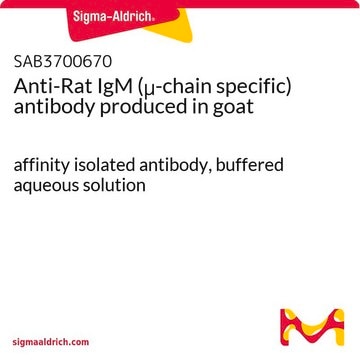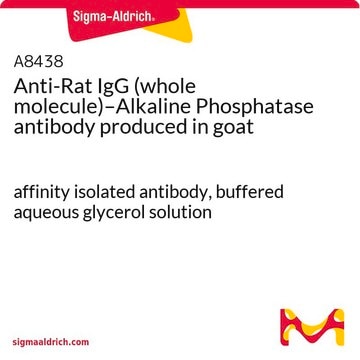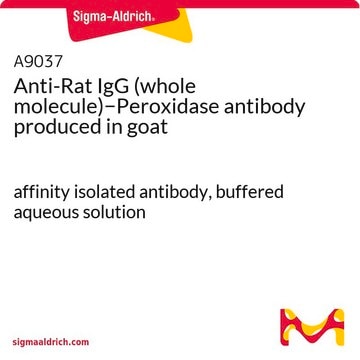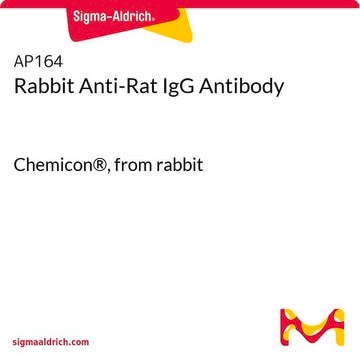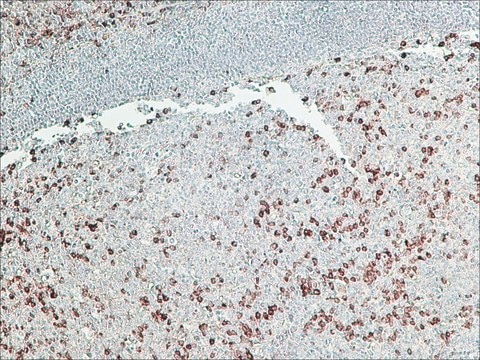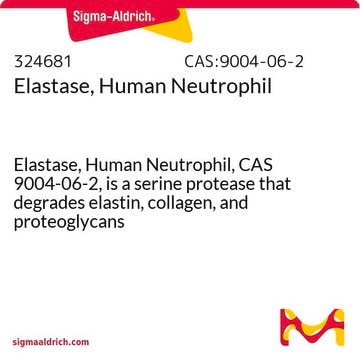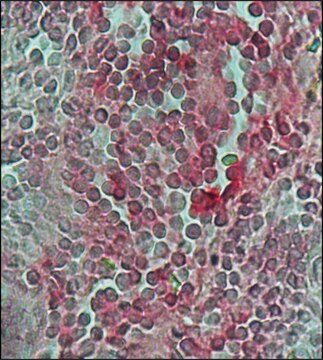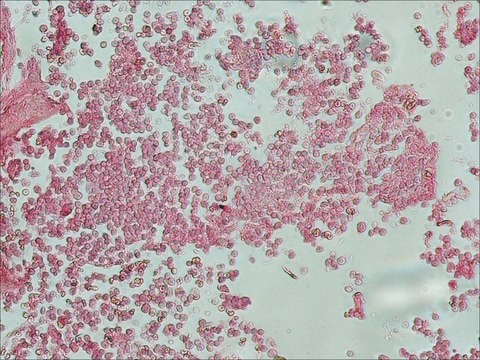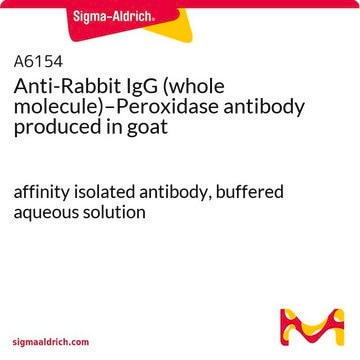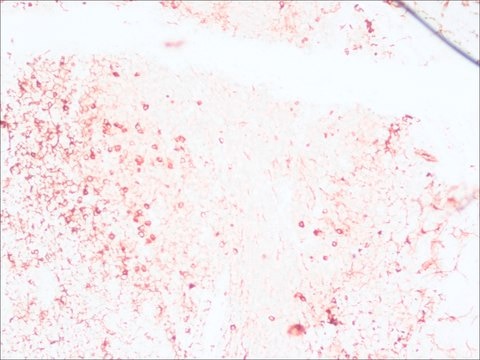R0886
Monoclonal Anti-Rat IgM antibody produced in mouse
clone RTM-32, ascites fluid
About This Item
Recommended Products
biological source
mouse
Quality Level
conjugate
unconjugated
antibody form
ascites fluid
antibody product type
secondary antibodies
clone
RTM-32, monoclonal
contains
15 mM sodium azide
technique(s)
capture ELISA: suitable
dot blot: suitable
immunocytochemistry: suitable
indirect ELISA: 1:1,000
western blot: suitable
isotype
IgG1
shipped in
dry ice
storage temp.
−20°C
target post-translational modification
unmodified
Related Categories
General description
Monoclonal Anti-Rat IgM antibody is specific for an epitope present on the heavy chain of rat IgM. By immunoblotting, the antibody detects the denatured-reduced heavy chain molecule of rat IgM (μ-chain). The product recognizes rat IgMs derived from normal serum or myeloma proteins, but does not detect other rat immunoglobulins. In assays such as indirect ELISA and dot blot, the antibody weakly associates with guinea pig immunoglobulins. The product does not bind to IgG or serum preparations obtained from bovine, cat, chicken, dog, goat, horse, human, mouse, pig, rabbit, or sheep.
Specificity
Immunogen
Application
- indirect ELISA (1:1,000)
- immunocytochemistry
- immunohistochemistry
- dot blot
- immunoblotting
Biochem/physiol Actions
Physical form
Storage and Stability
Disclaimer
Not finding the right product?
Try our Product Selector Tool.
wgk_germany
nwg
flash_point_f
Not applicable
flash_point_c
Not applicable
Certificates of Analysis (COA)
Search for Certificates of Analysis (COA) by entering the products Lot/Batch Number. Lot and Batch Numbers can be found on a product’s label following the words ‘Lot’ or ‘Batch’.
Already Own This Product?
Find documentation for the products that you have recently purchased in the Document Library.
Our team of scientists has experience in all areas of research including Life Science, Material Science, Chemical Synthesis, Chromatography, Analytical and many others.
Contact Technical Service